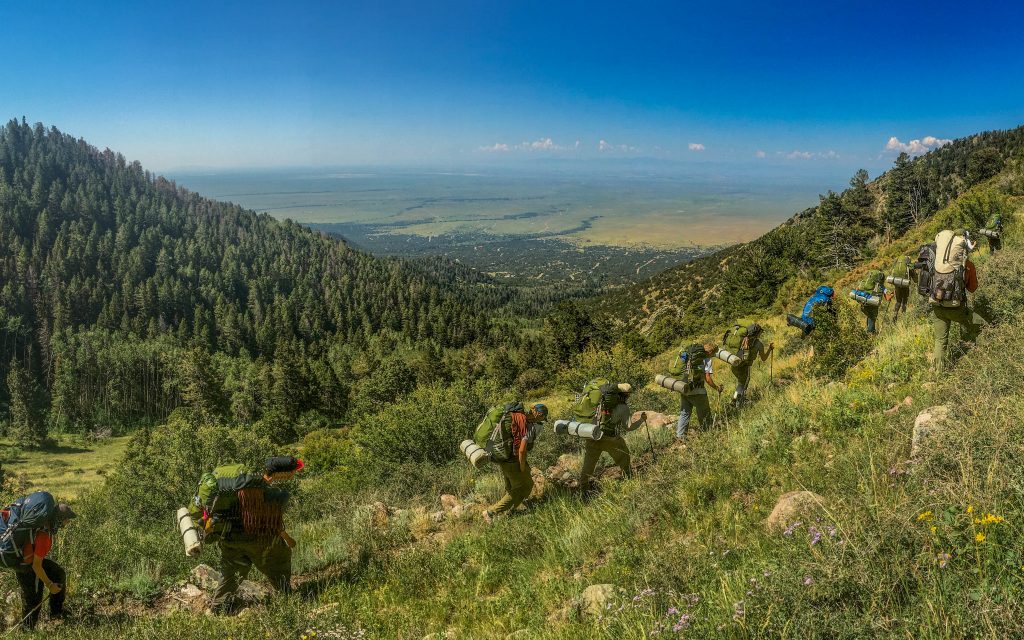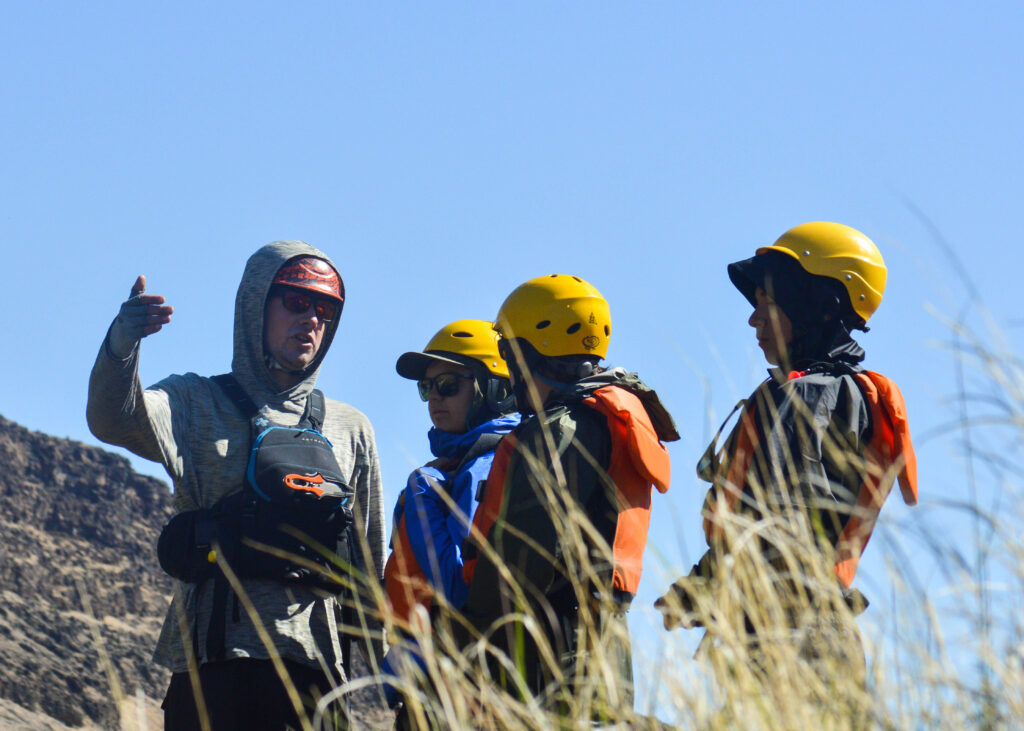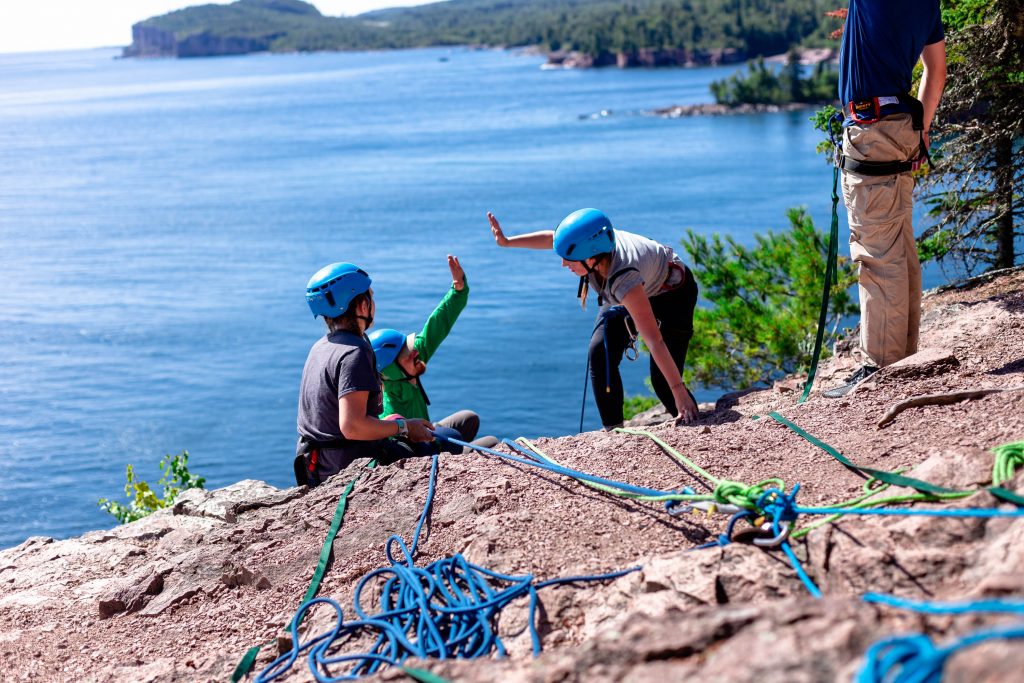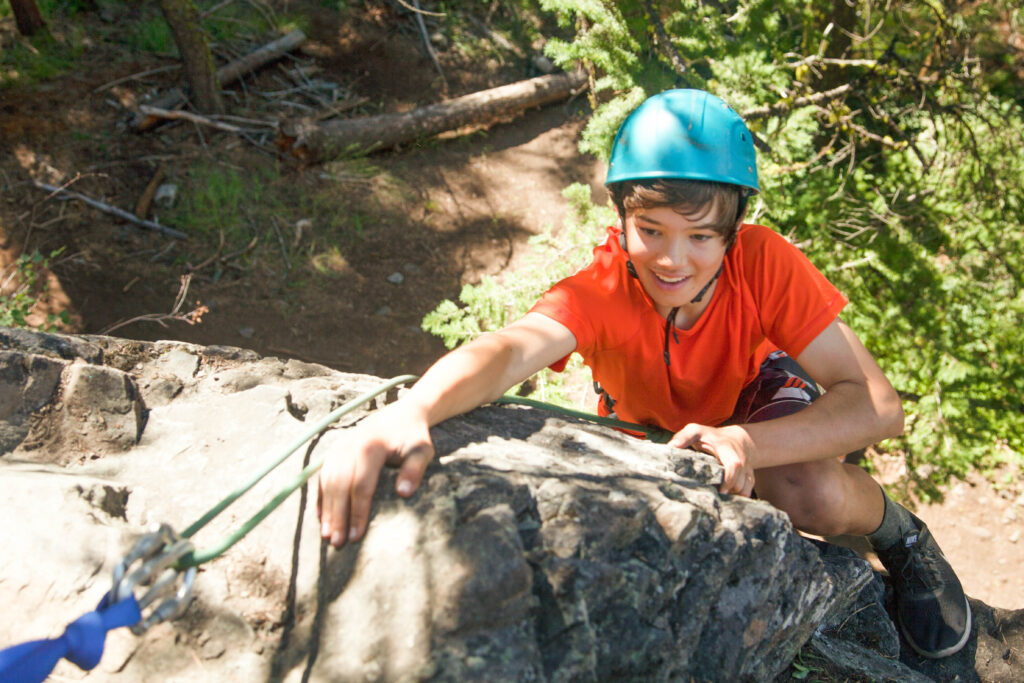On an Outward Bound expedition, trust is crucial. Students need to trust Instructors to provide for their basic needs of safety, food, water and shelter, as well as trust each other to act in the best interest of the team. Bringing together a group of strangers and heading into the woods is always nerve-wracking. However, relationships form and trust builds as students move further and further away from roads, cell phone service and outside support.
Youth and teens need a variety of trusted adults in their lives. Whether you’re a new adult working to build trust with a young person, or you’re working to rebuild a long-term relationship after it’s been broken—intentional steps in the right direction are needed. Here are a few ways we teach trust-building to our students while on course.

Photo was taken on a Sangre de Cristo Alpine Backpacking course by Jack Klim.
1.Trust Is Built Incrementally Over Time but Broken in an Instant
The first step to building or re-building trust—don’t break it! Unlike a failed math test or a sink full of dirty dishes, broken trust is not an issue that can be fixed with focus and a bit of hard work. The importance of trusting teammates in the woods can feel self-explanatory, but in a long-term relationship, it may help to lay out why it’s important. Teens often crave freedom. Outlining how trust is necessary for those freedoms may help give a bigger picture.
2. Basic Needs Come First
As mentioned above, if anyone in the relationship feels unsafe, the ability to build trust will stall. Sometimes safety comes down to information and clear communication. A student may be worried about wolves attacking them during the night, but until they voice that, it may not occur to the Instructors to address what their knowledge tells them is not an actual risk.
Youth, whose sense of judgment is still developing, may not be worried about risky things, like moving quickly on slippery rocks. Part of keeping them safe and building trust requires walking a fine line between pointing out hazards they don’t see and being seen as overly cautious and controlling.

Trust is built through clear expectations. Photo by Colby Blue.
3. Set Expectations
Making sure everyone is on the same page is key to building trust.
Mismatched expectations are a common pitfall when one party feels as if trust has been broken, and the other feels they did nothing wrong. Assumptions will take the place of information if it’s not provided.
Students may assume it’s fine to wander off and explore in the woods by themselves, while Instructors may assume everyone already understands the importance of communicating where they’re going. A child may assume they’ll experience the same consequences for misbehavior as the previous time, whereas the caregiver may expect that a more severe consequence is called for with a repeat offense. Communicating and making a plan before it’s needed will eliminate the confusion.
Knowing what to expect from each other can be as simple as outlining what you’re going to do today. Or it can be more complex. Like agreeing on a code of conduct and the consequences of not following it. One helpful tip is to write expectations down and post them in a common area for later referral.
4. Follow Through
Perhaps the most important piece in trust-building—doing what you said you were going to do. You may have promised time for swimming after lunch or to be close by to help with the map if needed. School policies may dictate consequences in the case of certain behaviors. A teen may make a different decision if they know the consequence, compared to if they don’t know if there will be a consequence or not.

Photo by David Morgan
5. Recognize You’re Not Entitled to Anyone’s Trust
You can’t demand trust, decree it, or force someone to trust you. It’s earned. Your team may not care about your experience, your credentials, or how well your last trip went. We all bring our past relationships and experiences with us, affecting how we begin to trust new people. If you’re having a hard time connecting and building trust with a team member, it may have more to do with their own experiences than anything you are or aren’t doing.
6. Own up to Your Mistakes
We all make them. Choosing to show your humanity and take ownership of your mistakes in front of a team can be unusual, and can go a long way toward building trust than carrying on as if nothing happened or making excuses. Choosing to lead by example, shows the kind of open communication you hope to receive back from them.

Structure and consistency help students feel safe in a new environment where other factors can feel unpredictable.
7. No Surprises
Predictability is a good thing when building trust. Later in a relationship, surprises and spontaneity help keep things from getting dull, but in the early phases of an expedition or a relationship, keep it consistent. Doing what you say you’re going to leads to a degree of predictability. Structure and consistency help students feel safe in a new environment where other factors can feel unpredictable.
Building Ground for Trust
Being liked, respected and trusted are not the same. Hopefully, all come in time, but our energy and focus first need to be on gaining trust. While we can’t control how long the trust-building process takes, we can influence it by being intentional in our actions.
Just as we hope our students set aside past experiences and assumptions about adults in their lives, we have to do the same. By not putting our students into boxes or making assumptions about how we think they’ll act based on our experiences with other youth, there creates an open space for trust to build.
As with many things on an Outward Bound course, it’s hard but rewarding. The fact that it’s hard makes it rewarding.
About the Author
Renee Igo was an Outward Bound student at age 15 and has been instructing wilderness expeditions for the Voyageur Outward Bound School for the past eight years. When not instructing, she holds a variety of other teaching positions and raises sheep in Maine.




